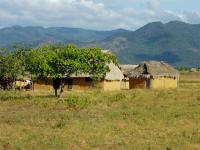New research offers insight into what indigenous agriculture communities in the Amazon need to be sustainable
May 16, 2014
In the Rupununi region of Guyana, the indigenous people rely on hunting and subsistence agriculture for their livelihoods. While earlier studies on sustainable management plans for these people have focused on only one aspect of sustainability -- resource use, for example -- new research by a group of CHANS-Net scientists uses a holistic model framework to look at the interactions between demographic growth, hunting, subsistence agriculture, land cover change and animal population.
“Agent-based modeling of hunting and subsistence agriculture on indigenous lands: Understanding interactions between social and ecological system,” was published online on April 30, 2014 by Environmental Modelling & Software. Authors are Takuya Iwamura, Jose Fragoso, Eric Lambin and Jeffrey Luzar, all of Stanford University, as well as and Kirsten Silvius, of the Gordon and Betty Moore Foundation.
"Our model can be used for understanding the conditions of sustainability for indigenous communities relying on subsistence agriculture and hunting," the authors write, "and for scenario analyses to examine the implications of external intervention."







